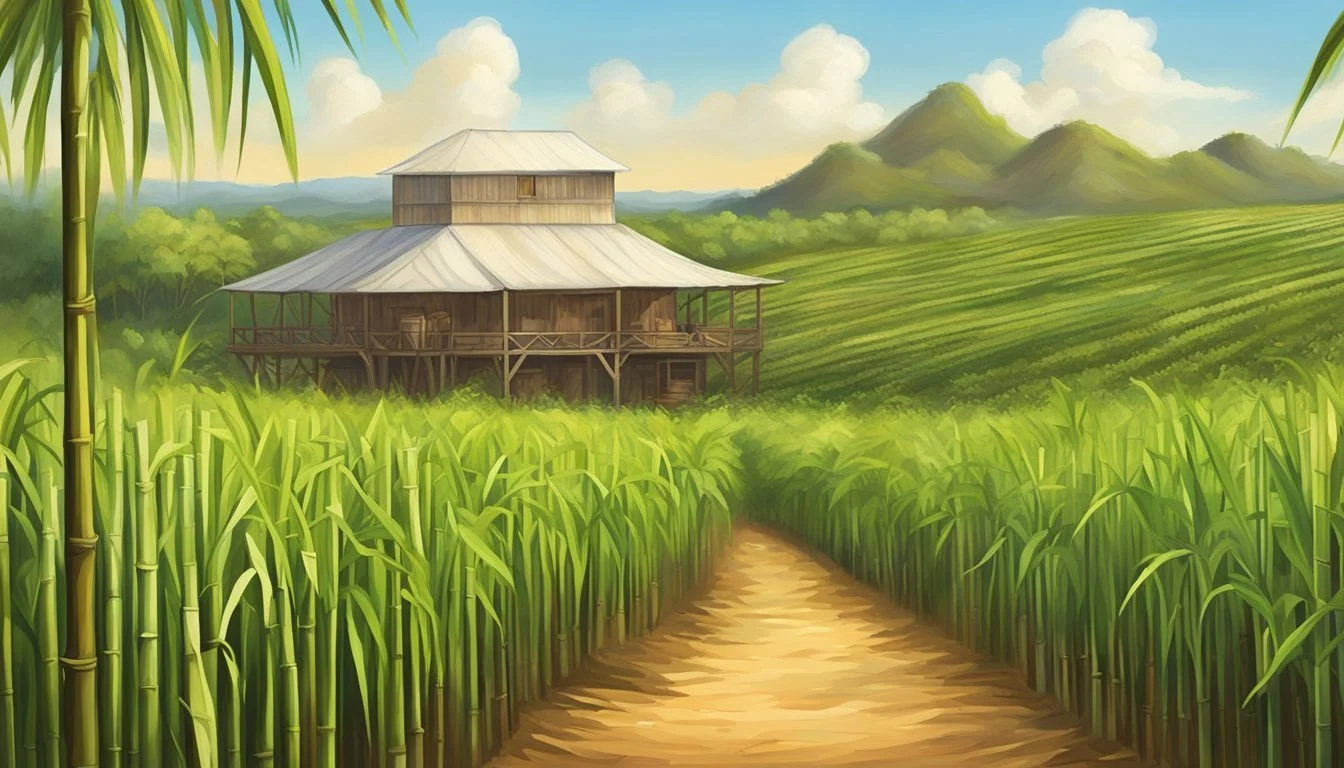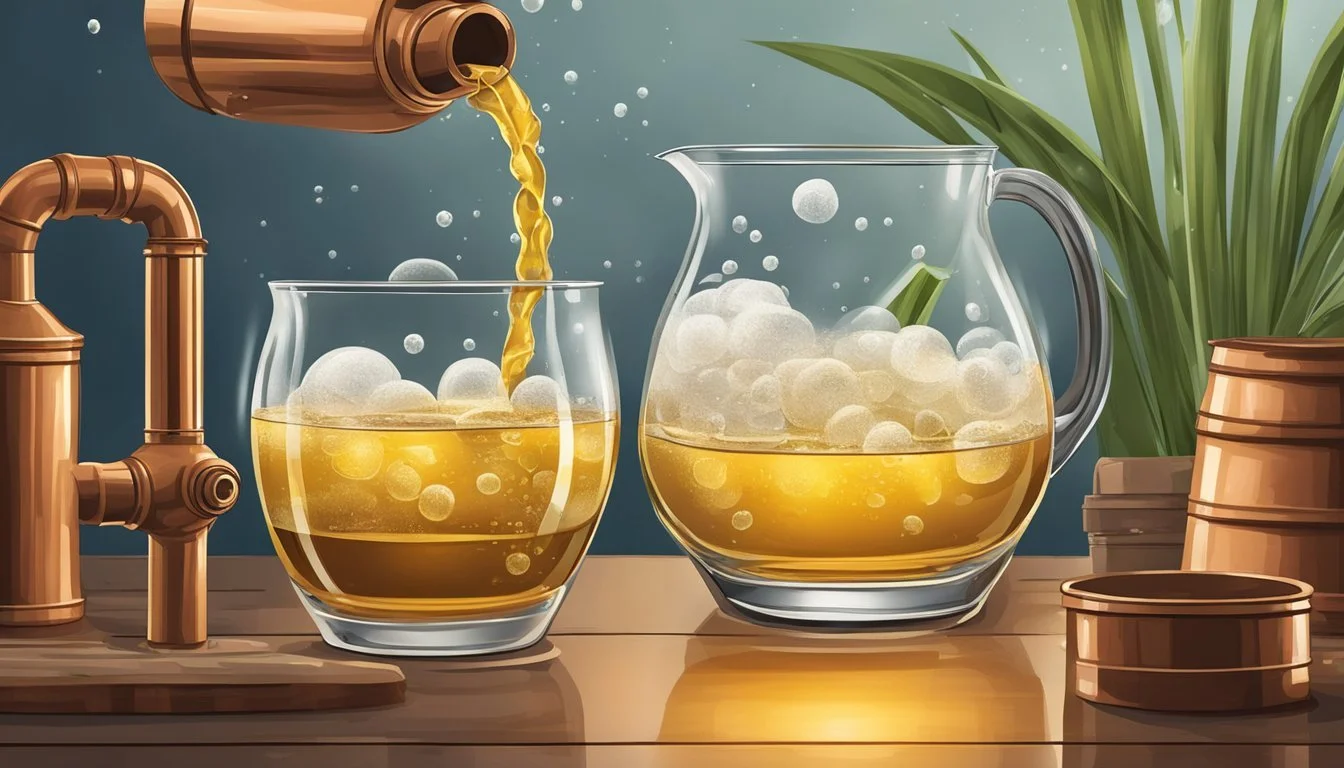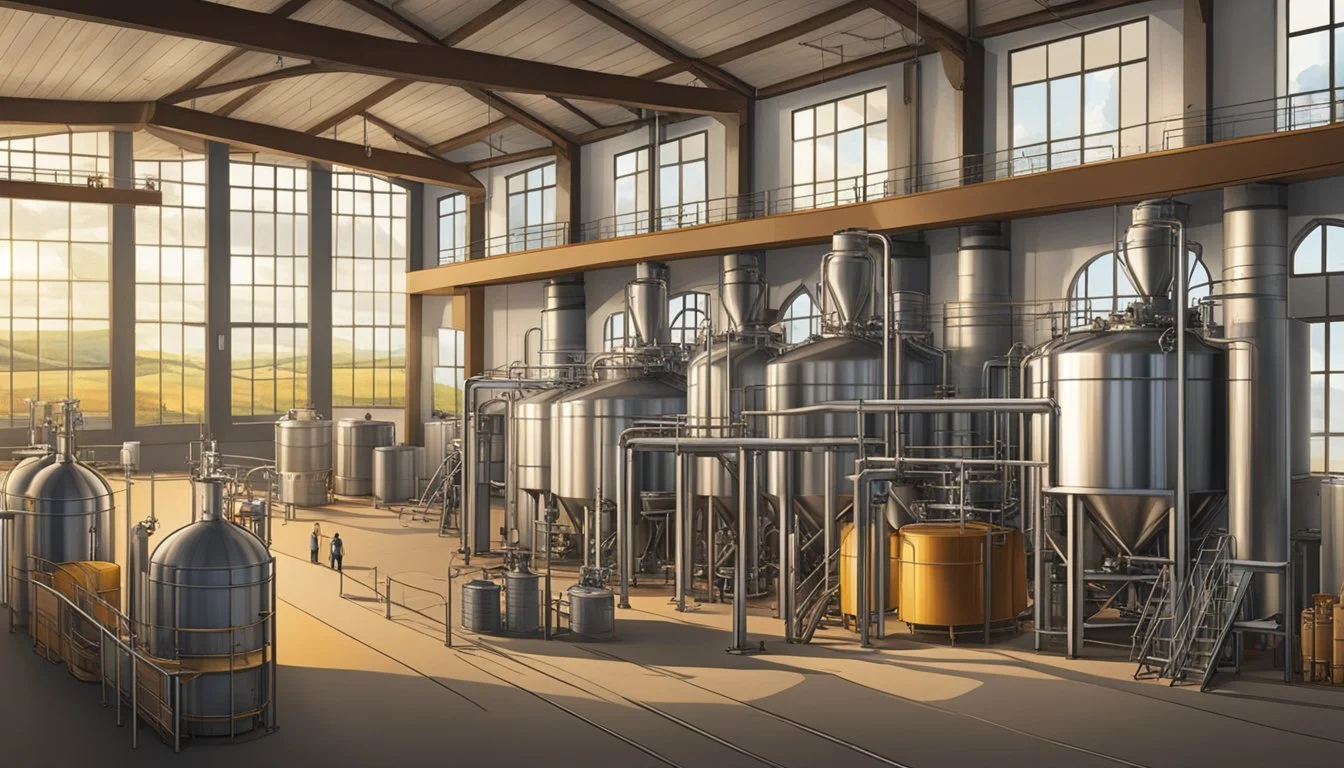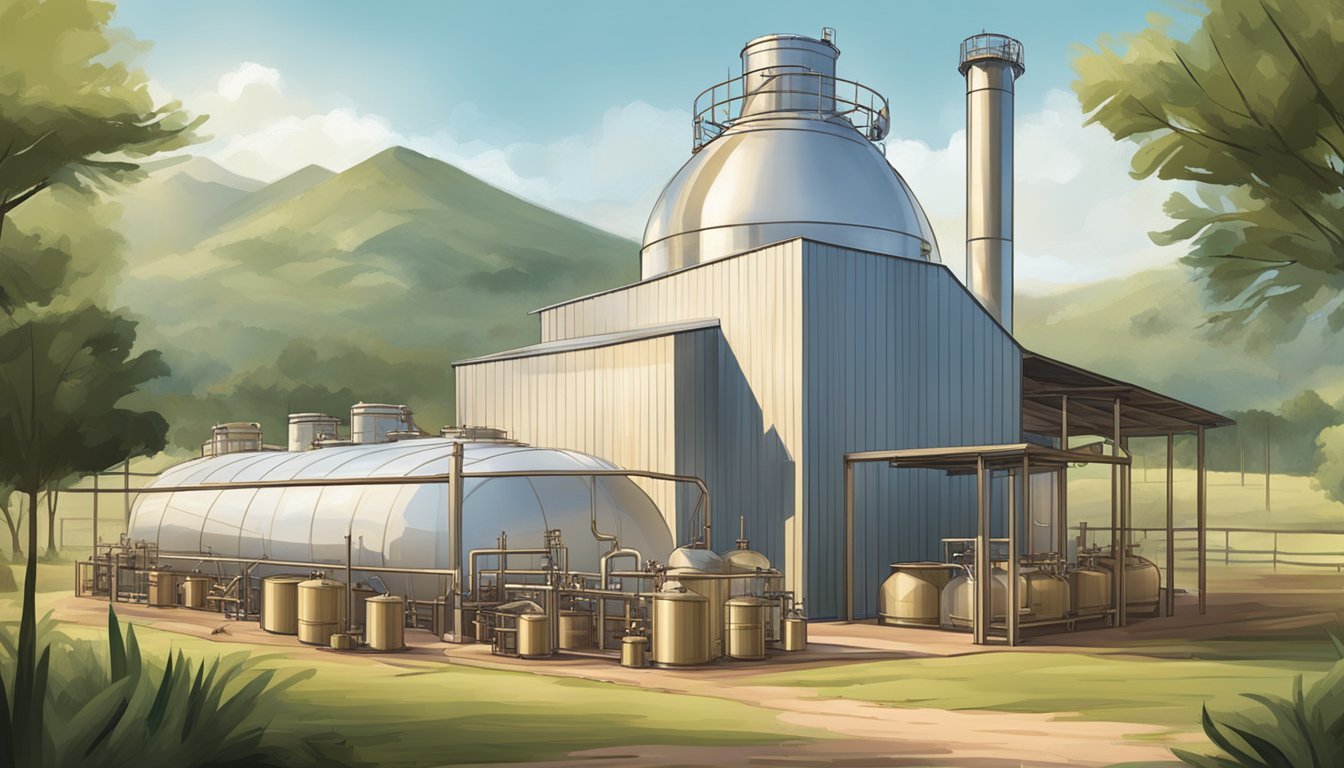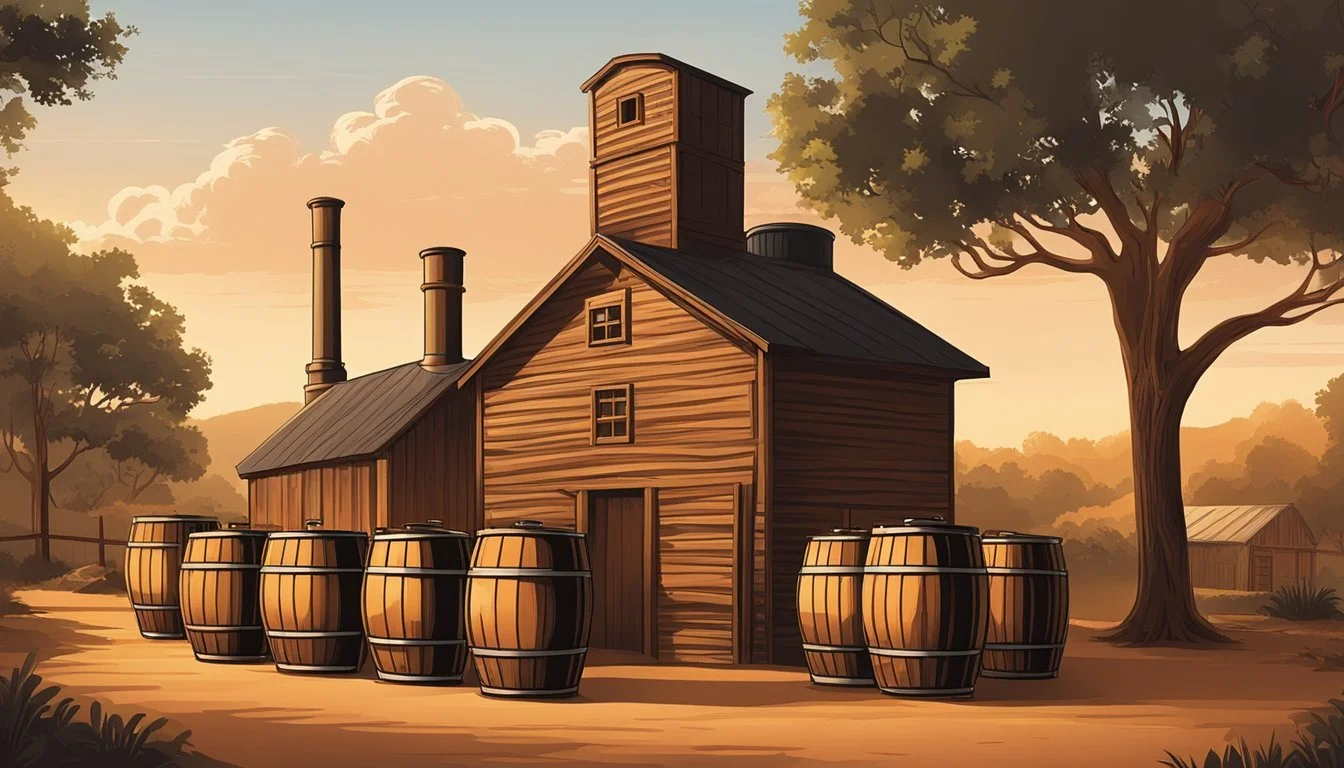The Rise of Texas-Made Cachaça
A New Player in the Global Spirit Market
Texas, traditionally associated with its rich history of producing whiskey and bourbon, is now embracing the exciting world of cachaça, Brazil's most popular spirit. This sugar cane-based distilled beverage, often compared to rum, holds an authentic Brazilian identity yet is now being crafted within the Lone Star State's borders. Texas-made cachaça is not only a nod to the state's innovative spirit within the beverage industry but also a burgeoning segment that caters to a growing appetite for diverse and authentic international spirits.
Cachaça production in Texas captures the traditional Brazilian methods while infusing local nuances, making it distinct and attractive to both cachaça enthusiasts and novices alike. Distillers in Texas have started to produce cachaça that respects the authentic Brazilian process, which involves fermenting and distilling fresh sugarcane juice. These Texas distilleries often utilize local ingredients and employ traditional pot stills to achieve a quality and taste profile that honors the spirit's heritage.
As these distilleries carve out a niche within the state's already diverse alcohol production scene, Texas-made cachaça is finding its way into a variety of cuisines and cocktail menus. It's not just about the caipirinha anymore – the classic Brazilian cocktail made with cachaça – but a whole host of other creative mixtures that showcase the spirit's versatility. This trend illustrates Texas' willingness to embrace and perfect global flavors, expanding the horizons of its cuisine and craft beverage culture.
Historical Context of Texas-Made Cachaça
As cachaça firmly establishes its identity in Texas, its growth intertwines with the state’s diverse cultural heritage, including the influence of Czech immigrants and the evolution of the spirit’s production from its traditional roots to its new American home.
Origins and Czech Immigrants
Texas, a melting pot of various cultures, has seen the influence of Czech immigrants since they arrived in the 1800s. These settlers brought with them a tradition of distilling and an affinity for creating spirits from local resources. The nexus of this heritage and the Brazilian spirit of cachaça has yielded a unique Texan rendition of the drink. Crafting cachaça in Texas pays homage to the state's frontier ethos of innovation and resilience, reflecting a mutual respect for tradition and an eagerness to embrace new techniques.
Evolution of Cachaça in Texas
The evolution of cachaça in Texas has been marked by a blend of Brazilian tradition and local innovation. From its origins, the spirit has adapted to Texans’ tastes while preserving its Brazilian identity. The sugarcane typically used for cachaça thrives in the Texan climate, enabling distillers to craft a spirit that stays true to its roots yet incorporates the distinctive culture of the region. It is not only the spirit itself but also the stories it weaves within the community that enriches the Texan identity.
Distilling Process
In the heart of Texas, cachaça distilleries maintain traditional methods while incorporating local innovation. Quality ingredients, precise fermentation, and careful aging are pivotal to crafting a robust Texas-made cachaça.
Ingredients and Preparation
The distillation process begins with sugar cane, which is the bedrock ingredient for cachaça. Water is added to the carefully selected and crushed cane to extract its juice. This raw material must be fresh to ensure a quality end product, as the sugar content is highest immediately after harvest.
Fermentation Techniques
After preparation, the sugar cane juice is transferred to an airtight container where yeast is introduced. The strain of yeast used can influence the flavor profile significantly. Texas distillers combine time-tested fermentation techniques with controlled temperatures to promote optimal yeast activity, converting sugars into alcohol over several days.
Aging and Storage
Post-fermentation, the liquid is distilled in a still, usually made of copper, which removes impurities and concentrates the spirit. The role of wood becomes prominent in the aging stage, where the cachaça is stored in wooden barrels. Distillers carefully choose the wood type—often local or innovative varieties—to enhance flavor complexity. During this phase, the storage conditions such as temperature and humidity are meticulously managed to ensure the final product meets the desired standards of quality and taste.
Cultural Significance and Cuisine Integration
In Texas, cachaça is not only a spirit enjoyed for its flavor; it has also found its way into the state's cuisine and social fabric, symbolizing a blend of tradition and innovation.
Cachaça and Texas Cuisine
Cachaça has begun to make a unique mark on Texas cuisine, particularly within the realm of breakfast and pastry items, such as the beloved Texas Kolache. A kolache is a type of pastry that holds a dollop of fruit rimmed by a puffy pillow of supple dough. Originally hailing from Central Europe, kolaches have been enthusiastically adopted in Texas, often found in donut shops and enjoyed as a breakfast item. Integrating cachaça into these pastries, Texas chefs have infused traditional kolaches with a Brazilian twist, using the sugarcane spirit in fillings or as a flavor enhancer for the dough.
In addition to pastries, cachaça has found its way into Texan coffee culture. Artisanal coffee shops have started to experiment with cachaça-infused coffees, offering a novel take on coffee beverages that pair well with various cuisines and can be consumed any time of day, from morning breakfast to an evening digestif.
Examples of Cachaça Integration in Cuisine:
Cachaça-flavored fruit fillings in kolaches
Coffee drinks enhanced with cachaça
Glazes for meats and savory dishes containing cachaça
Cachaça in Social Gatherings
Cachaça embodies celebration and community within Texan social gatherings. Its versatility makes it a staple at events, from casual barbecues to more upscale soirées. As Texas' culinary scene embraces the global palate, cachaça has become a spirit that invites curiosity and experimentation, often serving as the base of cocktails that accompany a variety of food dishes. The spirit's presence in social settings is a testament to its adaptability and the Texan spirit of inclusion, integrating the essence of Brazilian heritage with the bold flavors of Texan cuisine.
Social Examples:
Casual: Cachaça-based cocktails served alongside grilled meats at a Texas barbecue.
Formal: Specialty cachaça infusions offered at themed events, reflecting the sophistication of the spirit.
By weaving cachaça into both the culinary and social tapestry of the state, Texans highlight their appreciation for diverse flavors and the state's ability to adapt international influences into its own culture, making Texas not just a place for food, but a state of mind for innovation and culinary exploration.
Modern Production and Industry
The cachaça industry in Texas is experiencing a revival, with craft distilleries driving innovation and contributing to economic growth. Core to this resurgence is the integration of traditional Brazilian methods with Texan ingenuity.
Craft Distilleries in Texas
In Texas, cities like Houston and Austin are becoming hotspots for cachaça production. Craft distilleries emphasize small-batch artisanal techniques, with a focus on quality and local character. They often incorporate Texas-grown sugarcane, a nod to the state's agricultural prowess. Geologists with college degrees are being tapped to identify the best terroir for sugarcane, ensuring the soil's qualities are imparted in the spirit's flavor.
Houston: channels its diverse cultural energy into the cachaça it produces.
Austin: Known for its innovation, integrates modern distilling techniques.
Economic Impact
The cachaça industry is carving out its niche in Texas’s economy. Beyond job creation, the industry promotes tourism and has potential for significant export revenue. Moreover, the growth of the cachaça industry positions Texas as a contender in the global spirits market.
Production: Creates jobs in agriculture, manufacturing, and sales.
Industry: Contributes to Texas's GDP and promotes the state's cultural profile on an international scale.
The Art of Cachaça Tasting
Cachaça tasting is an intricate process that highlights the unique flavor profiles of this authentic Brazilian spirit. Expertise and sensory analysis are central to understanding and appreciating cachaça during tasting events.
Flavor Profiles
Cachaça's distinctive flavors originate from its production process, which utilizes fresh sugarcane juice. The spirit's flavor spectrum ranges from fruity and herbaceous notes to woody and spicy undertones, reflective of the cachaça's aging process. When tasting, individuals should pay close attention to:
The Aroma: A direct indicator of the flavor profile and complexity of the cachaça.
The Taste: Initial impressions can include sweetness from the sugarcane, followed by various accentuated flavors depending on aging conditions.
The Finish: The lingering taste post-sipping can range from a smooth, mellowed finish to a fiery bite, indicating the alcohol content and maturation method.
Tasting Events
Tasting events provide an ideal setting for both novices and connoisseurs to explore various Texas-made cachaças. These events offer a structured environment where participants can:
Learn proper tasting techniques, such as swirling and sipping gently, to release the spirit's aromas and flavors.
Engage with experienced tasters who can guide them through the flavor profiles, helping them to distinguish between an unaged cachaça, typically lighter and fruitier, and an aged variety, which may exhibit richer, more complex characteristics.
Tasting events can often involve paired culinary experiences that enhance the spirit’s flavor, making them educational as well as enjoyable engagements for cachaça enthusiasts.
Regulations and Standards
In producing Texas-made Cachaça, adherence to strict regulations and quality standards is imperative, ensuring product integrity and industry trust.
Quality Control
Texas manufacturers of Cachaça actively implement rigorous quality control measures. They align with both Brazilian regulations and the U.S. standards for distilled spirits to guarantee the consistency and quality of their offering:
ABV Requirements: Cachaça must possess an alcohol by volume (ABV) between 38% and 48%.
Sugar Content: The addition of sugar is capped at 6 grams per liter.
Quality control also encompasses monitoring proper fermentation and distillation processes. Texas producers must conduct frequent tests to avoid the transfer of undesirable compounds like DMS (Dimethyl Sulfide) to the final product, per updated identity standards.
Legal Framework
The legal framework within which Texas-made Cachaça operates includes both Brazilian laws—given the spirit's recognition as a product of Brazil—and U.S. regulations, implying:
Class Designation: As finalized by TTB, Cachaça is a type within the class designation "rum", recognized distinctly as a product of Brazil.
Compliance: Producers must comply with the distilled spirits standards of identity regulations found in 27 CFR 5.22(f).
It is crucial for Texas producers to navigate these regulations carefully to solidify the legitimacy and marketability of their Cachaça on both domestic and international levels.
Future Trends and Sustainability
As Texas cachaça makers look ahead, they are positioning their industry at the forefront of sustainability and innovation. This section will touch on the progressive methodologies Texas distilleries are implementing to safeguard the environment while also setting new industry trends.
Innovation in Production
Texas cachaça producers are incorporating cutting-edge techniques to enhance the spirit's quality and sustainability. Distillation methods are being refined to reduce energy use, while waste materials from the production process are repurposed, creating a circular economy within the distilleries. The industry is exploring the use of local, drought-resistant sugarcane varieties that are suited to Texas' climate. By doing this, they're not only introducing innovative agricultural practices but also reducing the environmental impact of transportation and dependency on outside resources.
Sustainable Practices
Sustainability is the bedrock of the Texas-made cachaça industry's ethos:
Environmentally Conscious Farming: The use of organic farming practices and the avoidance of harmful pesticides help preserve local biodiversity.
Water Conservation: Advanced techniques for minimizing water usage in production are a critical component of Texas' approach, considering the state's periodic drought conditions.
Renewable Energy Utilization: Many Texas distilleries are investing in renewable energy sources like solar or wind power to run their operations.
Texas cachaça makers are not working in isolation; they are part of a global conversation on sustainable liquor production, aiming to reduce their environmental footprint and ensure the long-term viability of their craft and communities.
Conclusion
Texas-made cachaça represents a significant development in the world of distilled spirits, merging Brazilian cultural heritage with a touch of Texan innovation. The craft spirits movement in Texas has welcomed cachaça, often highlighting the traditional techniques and authentic sugarcane flavors.
The future outlook for Texas-made cachaça is promising. The spirit enjoys a growing popularity among aficionados and casual consumers alike. It's commendable that Texas distillers are not only preserving cachaça's Brazilian roots but also adding their unique local twist.
Cultural Heritage: Texas distilleries respect cachaça's Brazilian origins while contributing to a diverse spirits culture.
Innovation: Modern methods complement traditional practices, enhancing flavor profiles.
Future Outlook: Prospects for market expansion are strong, with potential for increased domestic and international recognition.
Texas-made cachaça could become a staple in bars and homes, with the Lone Star State setting a precedent for new regions to explore this spirit. The final product is a testament to the harmonious blend of tradition and innovation—a characteristic that could define the future of craft spirits.

